
While JSON files are preferred for storing data in human-readable form, it is good enough to give headaches when they are minified.
Of course, it will stay in human-readable form in any case but having a well-formatted file is always easy on the eyes. So let me share what you should expect from this guide first:
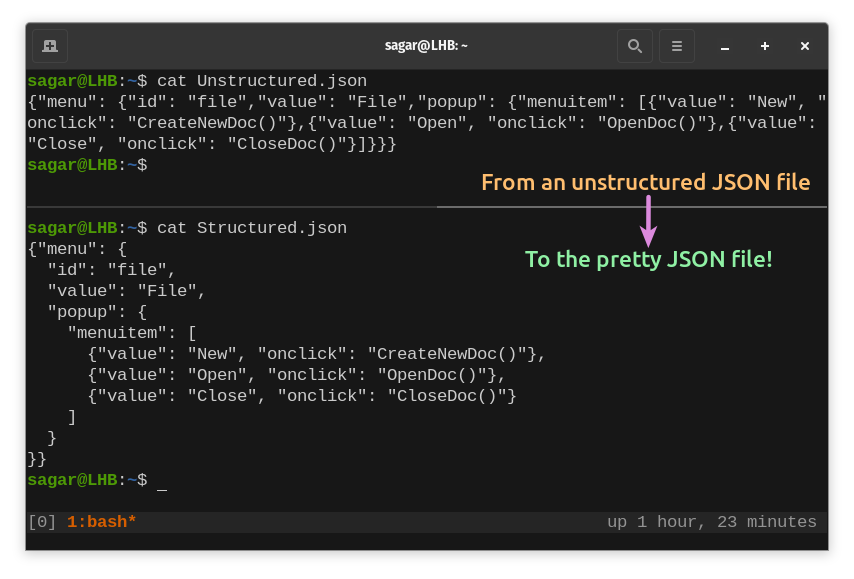
And throughout this guide, I'll be using the following unstructured JSON file for relevance:
{"menu": {"id": "file","value": "File","popup": {"menuitem": [{"value": "New", "onclick": "CreateNewDoc()"},{"value": "Open", "onclick": "OpenDoc()"},{"value": "Close", "onclick": "CloseDoc()"}]}}}Now, let me share various ways of prettify JSON files to read it in a structured, human-readable format.
Method 1: Pretty print JSON files using the jq command
The jq is a command-line JSON processor that allows users to modify JSON files in various ways allowing users various options to re-format their JSON files.
But it requires to be installed first. If you're on a Debian-based distro, you can use this command:
sudo apt install jqAnd the most straightforward way of re-formatting your JSON files is appending the filename with .:
jq . File.json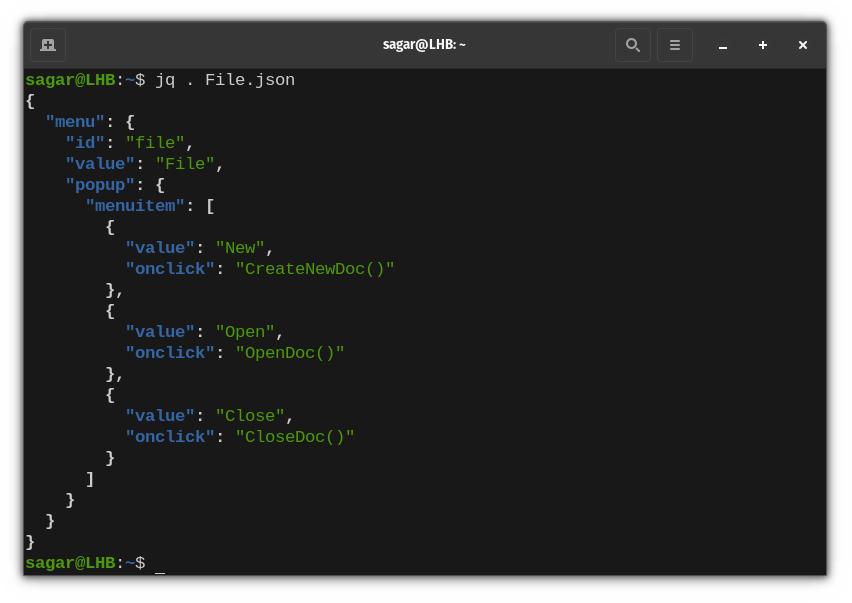
And jq allows users to format their files in 2 ways:
--tabwill add a tab for each indentation level instead of the default two spaces.--indent numberallows users to add spaces (up to 8) for each indentation level.
For example, I'll be adding four spaces for each indentation:
jq . --indent 4 File.json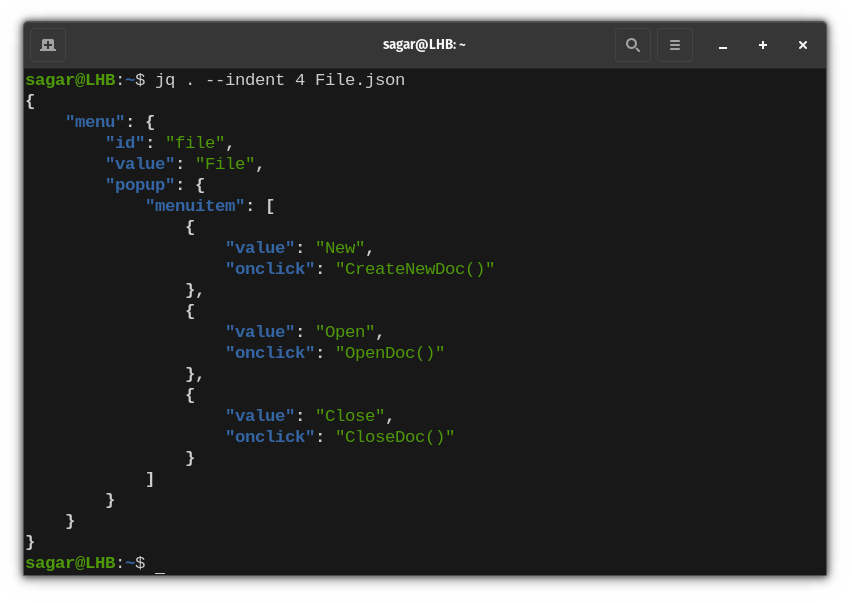
Method 2: Using json_pp to pretty print JSON files
The json_pp is a Perl module intended to convert the input to different output formats and can also be used to pretty print JSON files.
It needs to be piped with the cat command to work. Let me show you how:
cat File.json | json_pp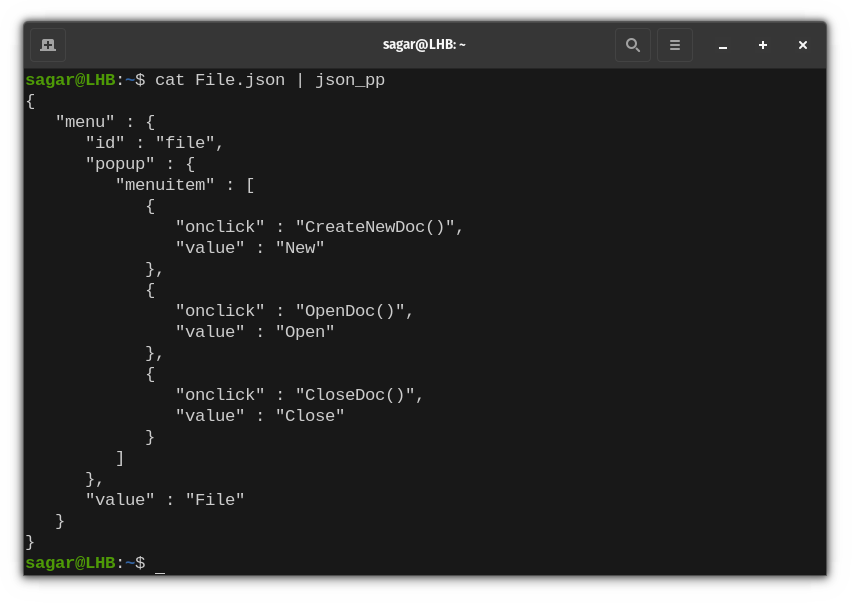
Method 3: Using Python to pretty print JSON file
Being an integral part of the majority of the system, what not to put Python to accomplish our desired task?
To format JSON files using Python, I'll be using json.tool with the -m option:
python3 -m json.tool File.json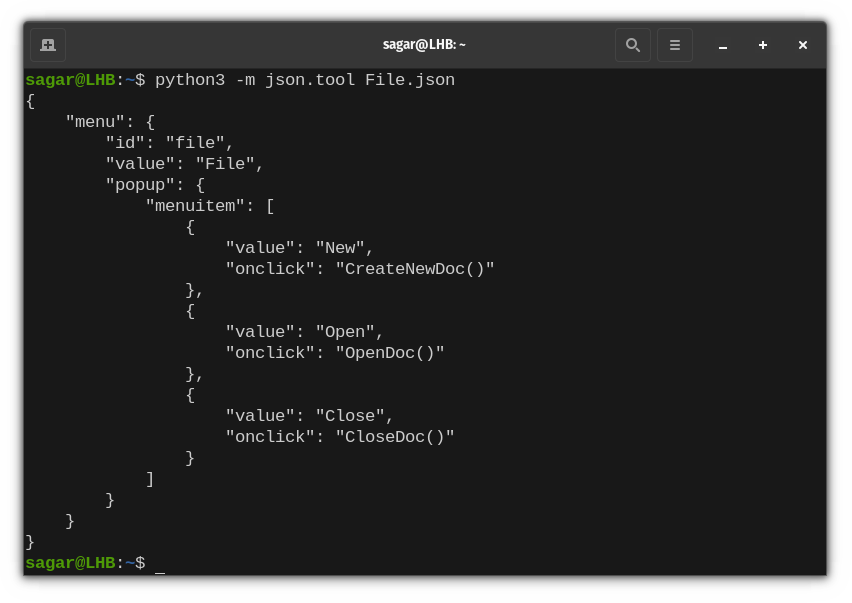
Method 4: Using the json_xs command to pretty print JSON file
This won't show any results in STDIN but will make changes in the file itself. Making it the only method that saves changes directly in this entire guide.
For example, I'll save the changes to a new file named Structured.json:
<File.json json_xs >Structured.json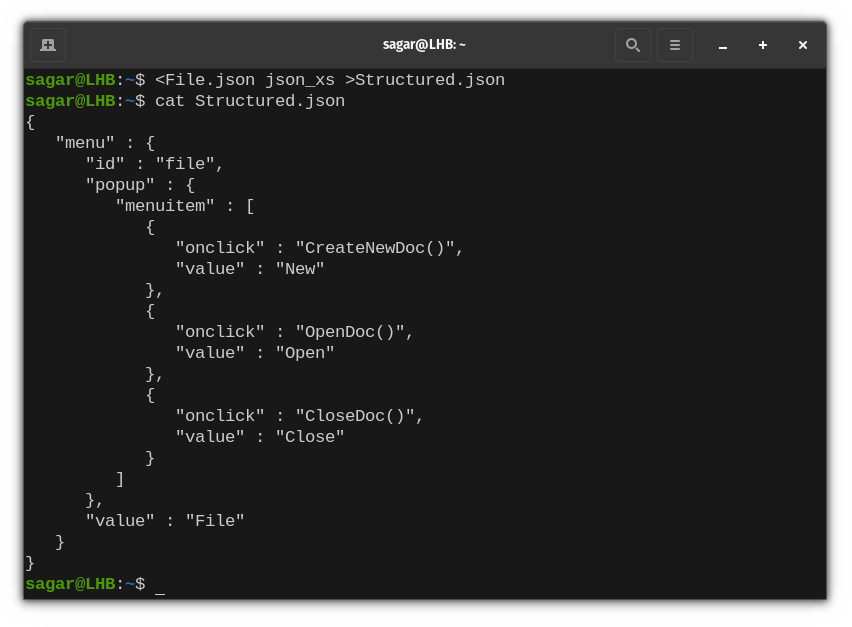
Wrapping Up
This was my take on how you can print pretty JSON files in Linux by multiple methods. And if you want to have complete control over formatting, I'd suggest using the first method.
Similarly, you can also pretty print XML in Linux. There is always a way to do things in Linux.

